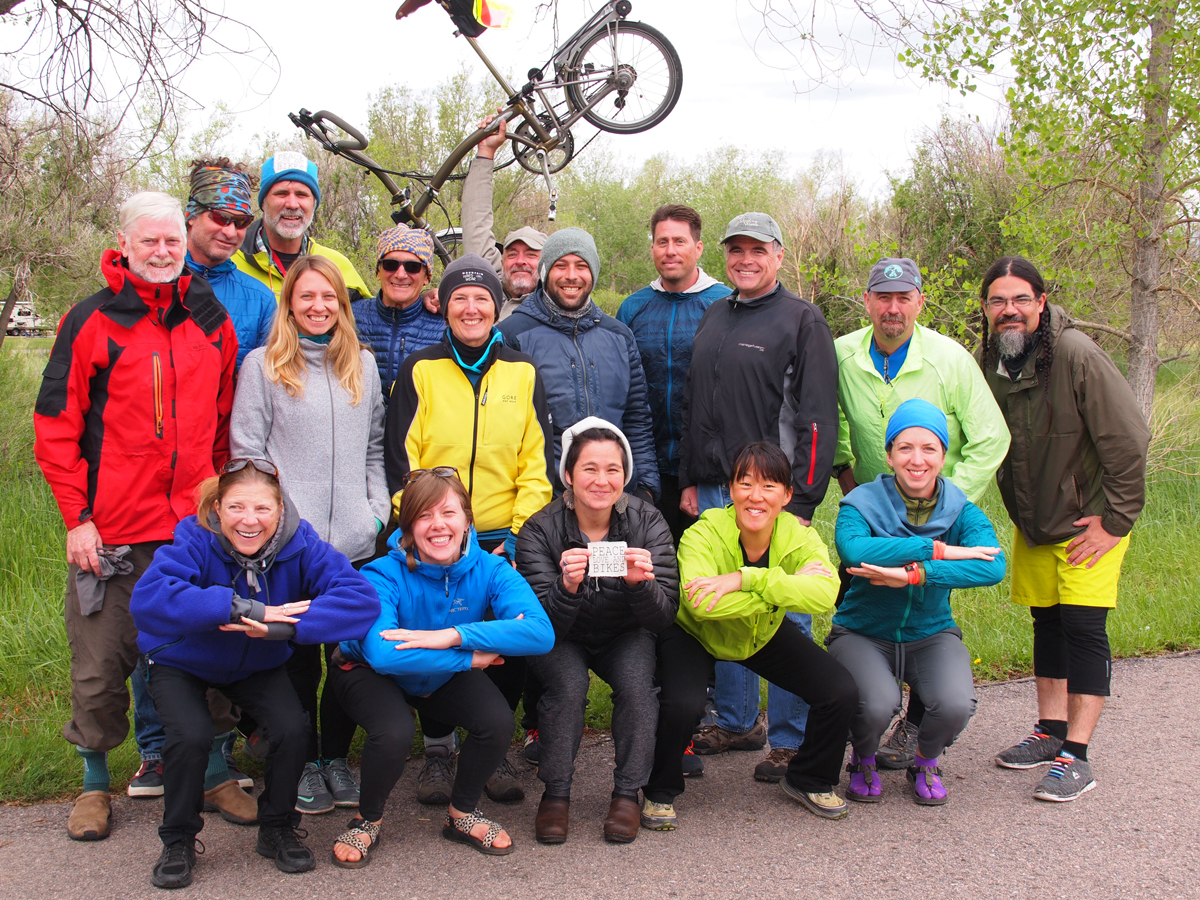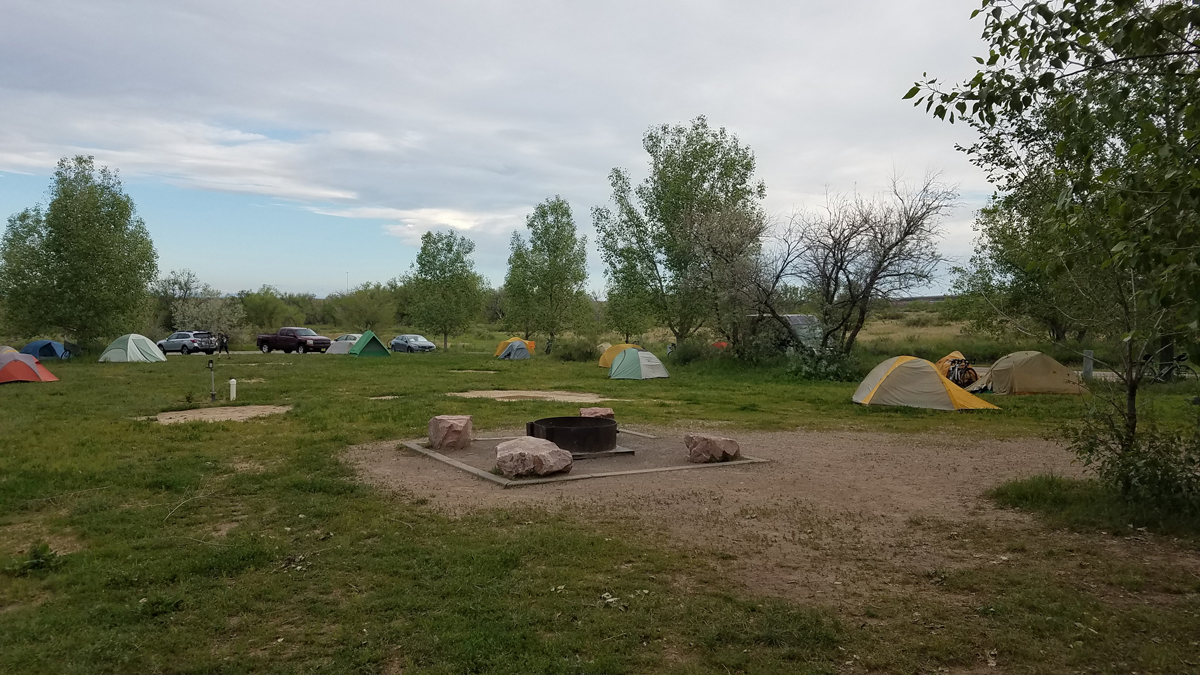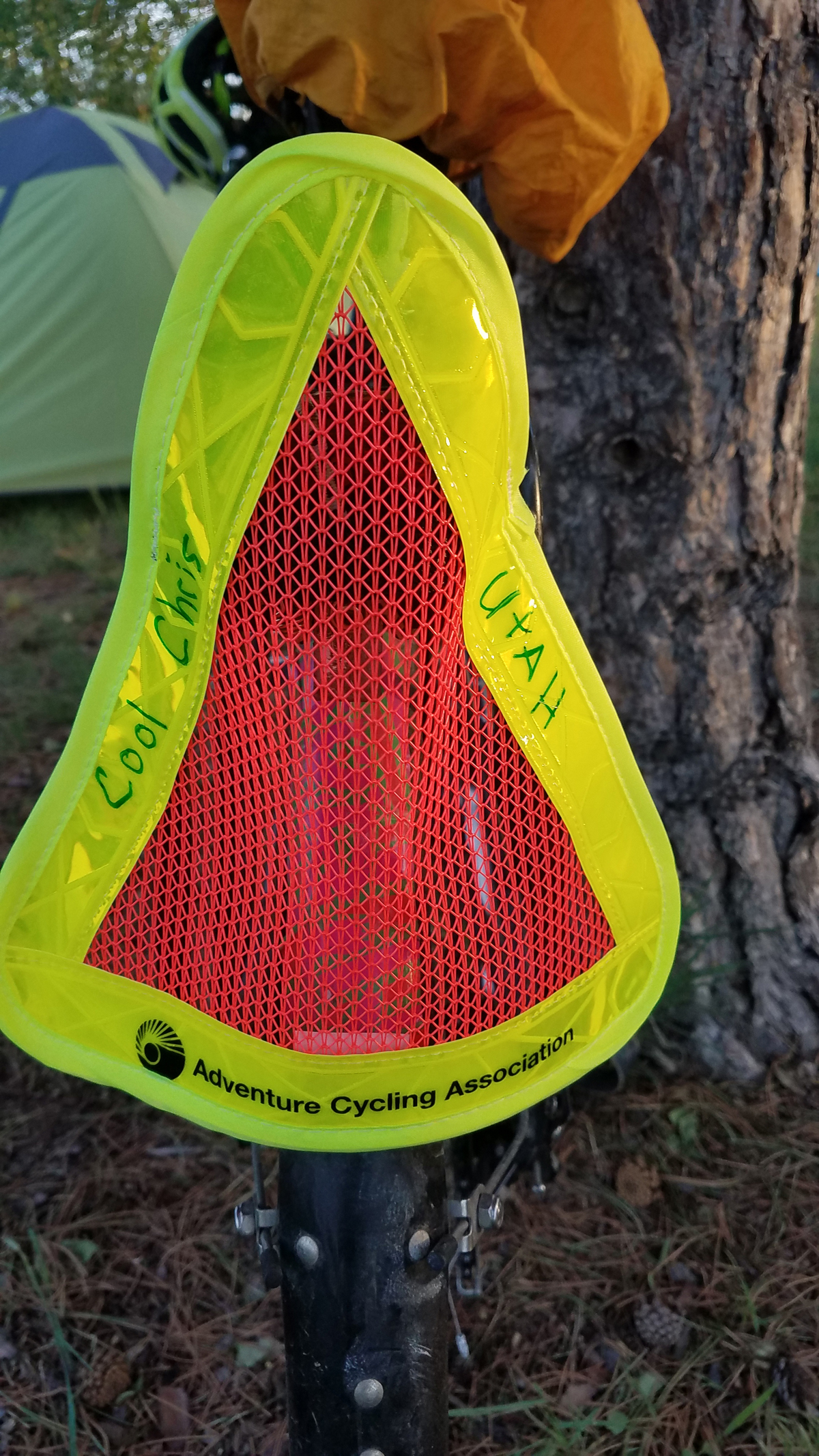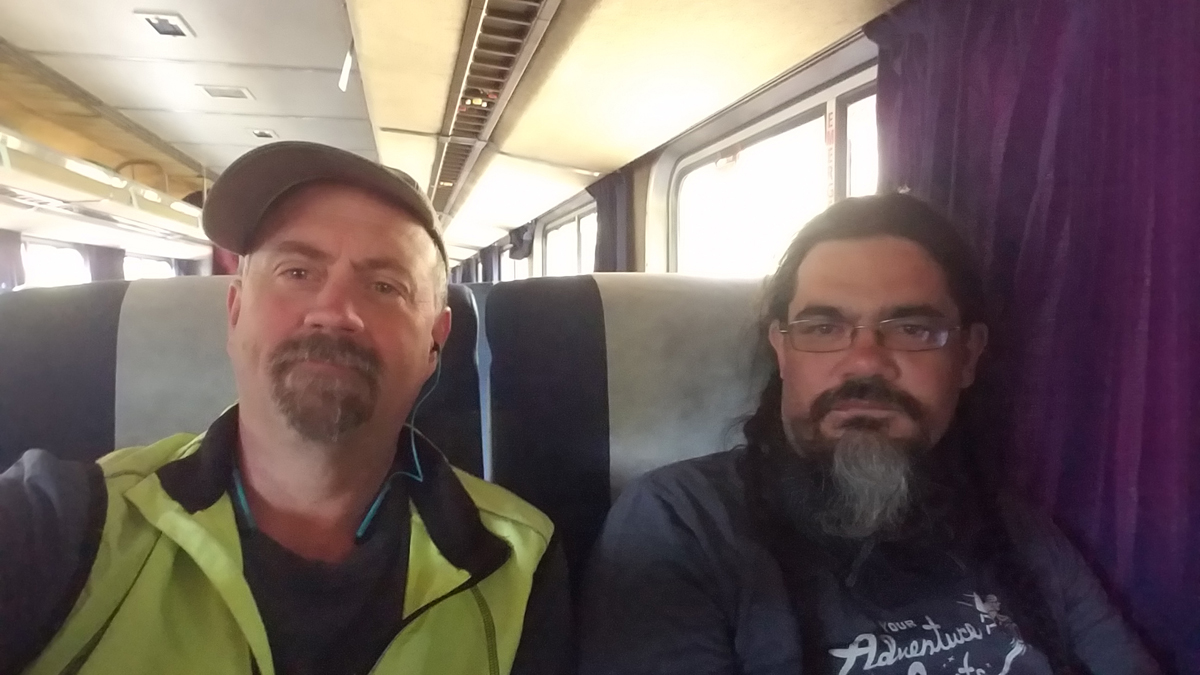By Chris Blinzinger – John and I have been touring together for almost 5 years and in that time we have enjoyed taking other people with us on our adventures. We have not necessarily been Tour Leaders, but have gone on trips with people of varying degrees of touring experience. We are certainly not world travelers but have had the opportunity to tour in semi-extreme, semi-remote areas in the deserts and mountains of the West. When planning trips, we throw out an invitation for anyone interested in accompanying us.

We have thrown around the idea of creating a touring company to accomplish a couple objectives. 1. To provide an opportunity for interested touring-minded people to have a supported/guided tour. 2. To use it as an opportunity to spend more time on our passion of bike touring and share it with others. I spotted the Leadership Training Course (LTC) (https://www.adventurecycling.org/guided-tours/educational-tours/) on the Adventure Cycling tour page https://www.adventurecycling.org/guided-tours/ and sent it to John for consideration about doing it. We agreed that it may offer some information about how to conduct a guided tour and another benefit was that it was a requirement to become an Adventure Cycling tour leader. We decided to do it and registered for the course in Denver scheduled for June 6-9, 2019.
We decided to use the train again to get us and our bikes to Denver and back. We had used it before and it is convenient when using to bike roll-on service for $20 each way. Before the LTC we received maps and information about the tour, how to prepare, what to bring and some of the expectations of the participants. All participants were included in a Google email group so introductions and coordination were facilitated easily. It’s interesting how reading the introductions prior to meeting participants offers one perception and then when meeting reality, perceptions change. We boarded the train in Salt Lake City at 3:30 AM on the day of our departure.
I was excited for the views through the mountains. When we rode back from Grand Junction two years ago we departed in the evening and did not have much daylight as darkness quickly set in after or departure. The train is very comfortable and the seats are wide and recline to facilitate sleeping. We both slept well until the sun was up. We were just coming out of Price Canyon when I stirred enough to look out the window. The train has an observation car where seats are not assigned and it’s a first come first served. It was a great car with big windows and great views. We stopped in Glenwood Springs and Winter Park long enough to get out and stretch the legs. These were designated smoke breaks as the other stops were not long enough to get off the train. Between Grand Junction and Denver, there are 28 tunnels that the train goes through. The longest is 6 miles long. The mountain views are awesome. There are areas with no other access than the Train in steep canyons with raging rivers at the bottom. The train is slow and if you’re in a hurry, it may not be the best option but for some time away and enjoying the journey rather than the destination, it is a good option. The train does not have Wi-Fi. Cell service is spotty in the remote areas of the mountains on the route. For those who can’t tolerate not being connected, it may not be a good option.

We arrived in Denver in the evening and quickly found the Cherry Creek bike path downtown that would lead us the 15 miles out to our Campground at Cherry Creek State Park. The path is great and pretty much follows the creek for most of the way. It is signed well and had we printed the map sent in the email from ACA, we may have had an easier time knowing whether to say right or left at the forks. One minor detour for a couple miles was easily signed and no problem. We arrived on Wednesday evening and the course did not start until the following late afternoon so we met a few other early arrivals and quickly set up camp at the group site as darkness was falling fast. John carries a pocket projector and a few movies on his tablet and always game to set up his small screen and show a biking movie. He uses a folded piece of corrugated plastic that levels out the ground below his air pad that doubles as a small movie screen.
The following day we rode around the park with Becca from Kansas City, one of the early arriving LTC participants. The weather was nice and typical for this year’s ongoing Spring weather. Riding required as least bringing an extra layer. Cherry Creek State Park is large with a big lake and walk/bike paths that go all the way around and marina, swim beach, huge dog park and bird viewing area. It is in the Southeast area of Metro Denver.
We greeted participants as they arrived and set up camp. Participants represented the states: SC, NC, D.C., NY, MO, MI, OH, CA, UT, TX, CO, OR, WY, IL. The course started at 16:00 with intro from course director Lynn and the three other leaders then all participants introduced themselves. It was great to see like-minded tourers and we were excited for the coming days. This course was designed to be run like a regular ACA tour without all the cycling miles. We were quickly split into four groups and assigned a leader. This allowed us to have a 4:1 participant-leader ratio and allowed for an excellent span of control. Some meetings were everyone (all 17) while others were the smaller groups. We were assigned chores that all self-supported tours include like cooking and food buying responsibilities. We would all have to ride to the store and buy food to stay within the budget and cook for the group. This is how it works on ACA self-supported tours. Each participant carries a portion of the “Group Gear” that includes small stoves, fuel bottles, utensils, French press (perhaps the most important) and a few other items.
When considering self-supported tours, I imagined that everyone would carry their own stove and pots. Not on ACA tours. Each participant is asked to leave 20% space available in their bags to carry a portion of the Group Gear. This makes total sense. John and I may have too much duplication when we tour together, but I also call it redundancy. Either way, each participant must carry some of the gear. Two people assigned for dinner and two for breakfast/lunch. Meals are included in the cost of the tour.
The participants in our LTC came from varying backgrounds and touring experience. Several had done cross country tours, some had never carried their own gear, and some had only done self-supported while others rode pedal assist bikes. There are so many variables with bike touring gear and experience. They all seem to work and I think whatever your preference, you can make it work one way or another. Learning the ACA way of doing business and company concepts were helpful. Not just from a bike touring perspective, but from a Leadership professional development perspective. Have you ever been on a tour and run into trouble. Whether it is with gear, weather or a conflict between people, we’ve all experienced it. How do you get through it and resolve it? John and I had a guy on one of our trips bail after the third day. This was another reason we wanted to participate, to know what we could do to avoid it happening again or avoid it in the first place. We participated in Role Plays. For me, most these have been less than helpful in training throughout my life so I was not looking forward to them. I was surprised how helpful they were. We were given scenarios (each that has occurred on a previous ACA tour) and had to work through it using the concepts of leadership and ACA procedures to resolve them. They were very realistic and helpful. I appreciated the diversity of our group with the single “Bike Touring” interest in common.
Breakfast was a 7 and class started at 8. We were usually done by 15:30 in the afternoon to give those responsible time for shopping and meal prep. One valuable tool when “Hangry” occurs is to tell people to eat. Number one rule for food is quantity. Have plenty to feed hungry cyclists. What do you cook for a 16 member cycling group? Whatever you are good at. One Leader suggested to have one solid recipe. There is a recipe book (I think it can be found on their website) that can provide good menu items but food is a plenty on ACA bike tours. I believe them when they say food is plentiful.
One of the main principles for an ACA tour leader is the Hands-Off principle. This means to make important decisions when they are necessary but to not micromanage the tour. This is meant to allow each cyclist to “Ride their own ride” and prevent each leader from getting unnecessarily bogged down details. I like this principle and believe it is my style.
Communication is important while touring with another or others. A golden rule is to wear a helmet whilst on the bike and…wear a reflective triangle (provided with cost of tour) that can be worn around the waist or strapped to the rear rack. This can be left roadside when someone is off the course. This lets the sweeper know that someone has stopped. They carry a few extra just in case. I like this idea as John and I ride together but the whole concept of leaving something on the side of the road if you’ve pulled off is a great communication tool.

We did not have much bike riding opportunity although the time spent in the course was valuable. I enjoyed meeting and working with all the participants and hope to see them again on rode in the future. I am better for participating and looking forward to a self-supported ACA tour next year. I am interested in becoming an ACA tour leader and perhaps I will have the opportunity someday. I have looked at and considered an ACA tour in the past but was uncertain of its value, now I have a new perspective and look forward participating because of the diverse like-minded cyclists and doing it in a part of the country away from home. John and I were put in separate groups during the week to which John said “I’m glad we didn’t spend a lot of time together”. His point, to which I agreed is that we had an opportunity to spend time and mingle with bike tourists from around the country. We took full advantage of that.
We stayed an extra night and left early Monday morning. It was great to leave having developed friendships over the week with people I hope to see somewhere down the road. The train was several hours late and the ride home was long. I sleep fine in a tent but the train is slow and it turned into a very long day. I arrived home with many plans percolating about when and where to take the next tour. Looks like Idaho Hot Springs in the Fall, but my desire to tour other regions of the country can be accomplished on my own or with an ACA tour. Bike touring is my hobby, I will always dream of far off lands but there is so much to see right here in the good ole USA? I will continue to work on becoming an ACA tour leader.

Whether you are interested in leading tours on your own or for ACA, the LTC can be valuable to understand the importance of group dynamics and give new perspective on tour leader responsibilities. LTC’s are offered each year around the country.
Becoming a Adventure Cycling Association Tour Leader
From the ACA website, the first step to becoming a tour leader is to take the Leadership Training Course as described above. Additionally, tour leaders must take CPR and have a First Aid Certification. Tour leaders need a recommendation from the LTC, followed by a phone interview. The next step is to staff or co-lead an ACA tour, followed by becoming an independent tour leader. For more information, see: https://www.adventurecycling.org/guided-tours/become-a-tour-leader/
Chris Blinzinger is an avid cyclist, commuter and tourer. He is a member of the Provo Bike Committee and advocate for active transportation. He tours with friends and family and hopes to ride back to his home state of Indiana in the near future.








